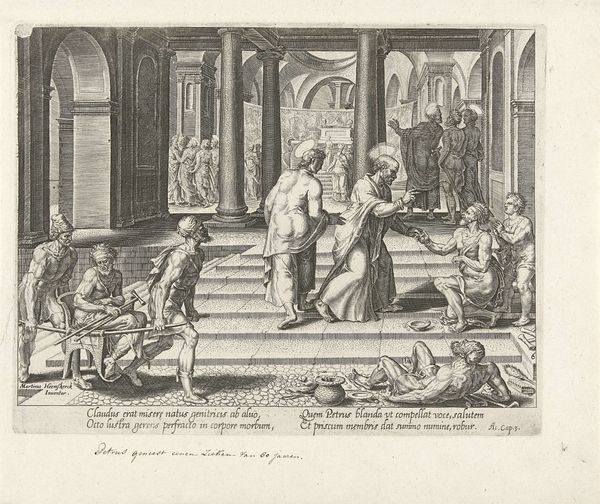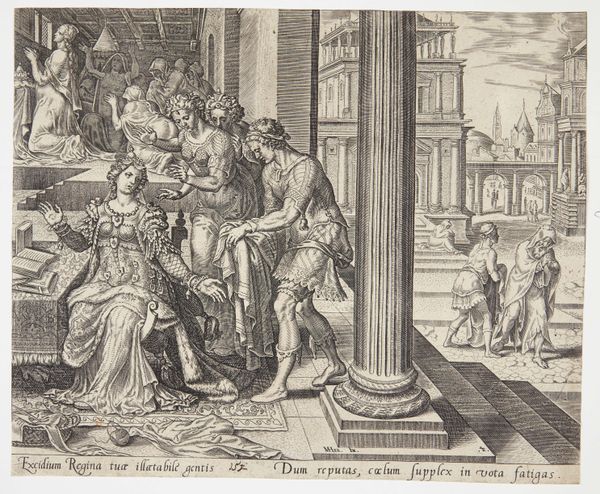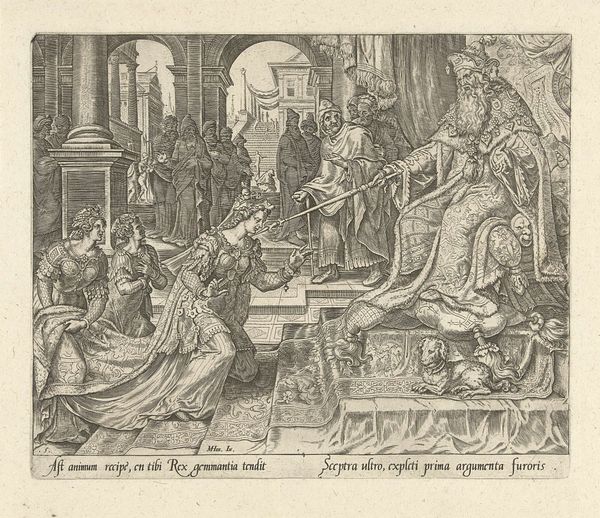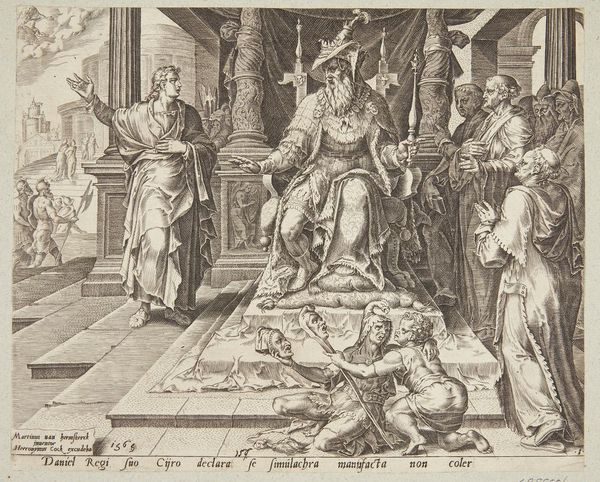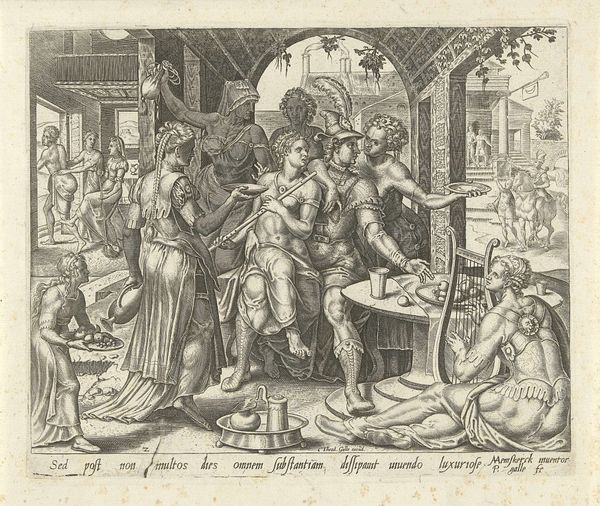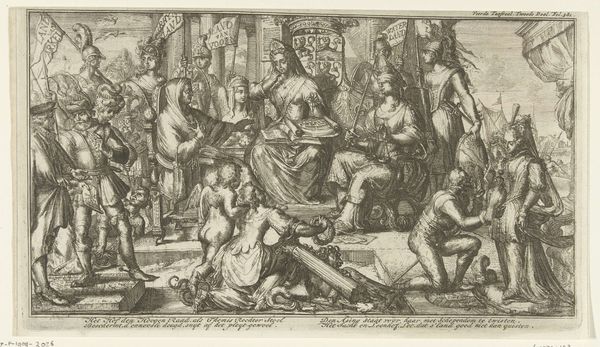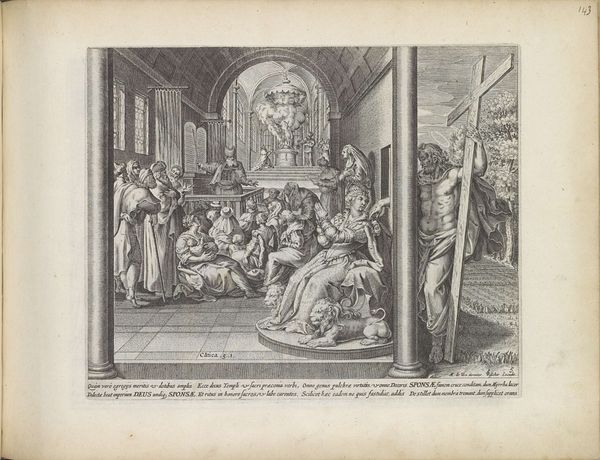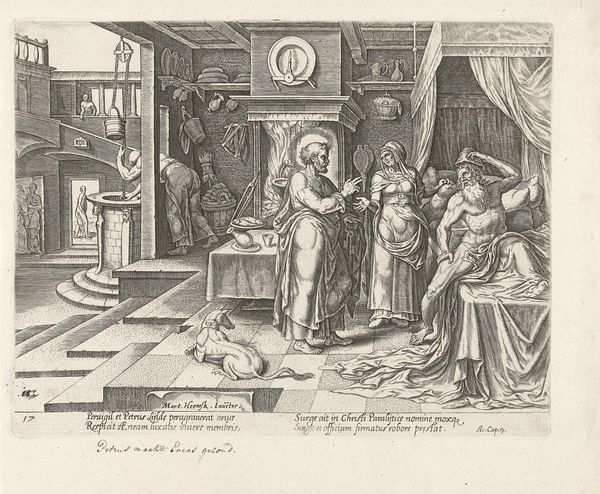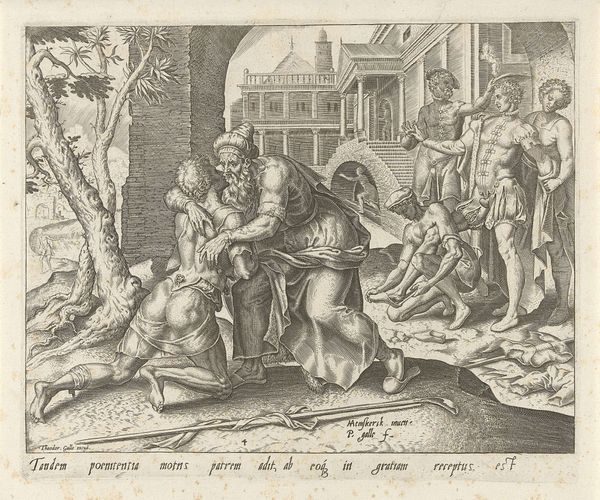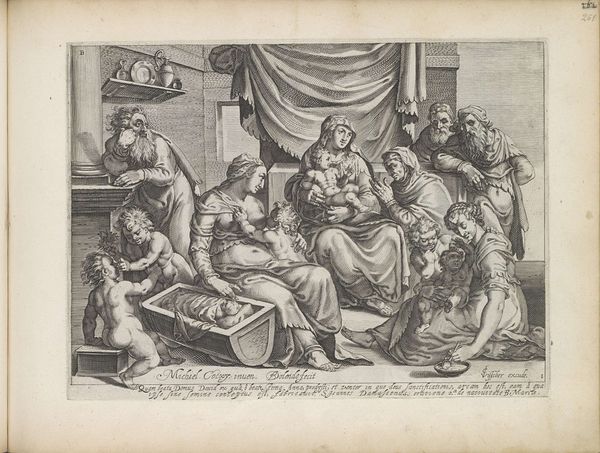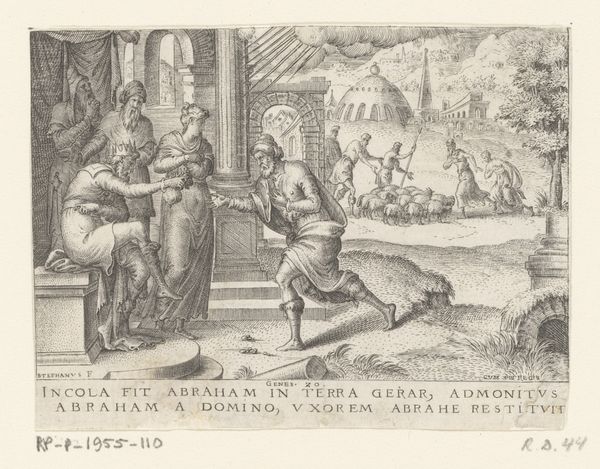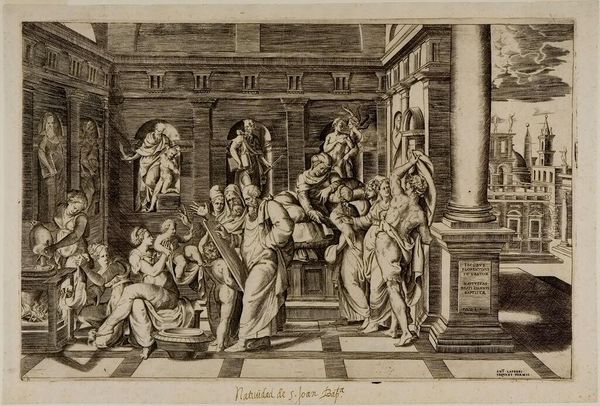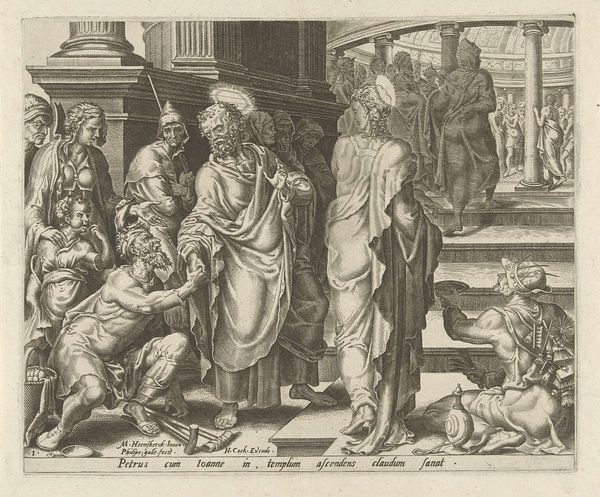
Ester hoort van haar dienstmeisjes dat Mordekai rouwkleren draagt 1564
0:00
0:00
print, engraving
# print
#
landscape
#
figuration
#
history-painting
#
northern-renaissance
#
engraving
Dimensions: height 203 mm, width 247 mm
Copyright: Rijks Museum: Open Domain
Curator: This engraving, “Ester hoort van haar dienstmeisjes dat Mordekai rouwkleren draagt”, made in 1564 by Philips Galle, presents a key scene from the Book of Esther. The print employs a rather striking composition; what is your initial read of it? Editor: I’m struck by how the textures and tones feel somewhat...rigid? It seems everything, from the stone pillars to Ester's dress, is treated with equal weight and linear precision. Curator: Absolutely. Galle worked during the Northern Renaissance; paying close attention to detail and linear perspective were key. But also consider the political and religious tensions of the time. This story of a Jewish queen in a Persian court who averts a genocide resonated with communities facing persecution. The materiality here works in concert with the socio-political climate to uplift oppressed groups, and by using fine engravings, Galle can increase production. Editor: True. The reproductive nature of the print—its very accessibility—amplified that message, did it not? Looking closely, you can see the engraver has a practical goal, the even distribution and mass consumption of potentially seditious information! Curator: Precisely! Furthermore, consider Esther's agency in this narrative. She uses her position to challenge power and protect her people, defying the gendered expectations placed upon her. And the mourning clothes worn by Mordekai—it is a powerful symbol of collective grief. Editor: So even a piece seemingly rigid in its production, and constrained by the historical and cultural limitations of its time can, if distributed correctly, upend oppressive institutions? I wonder what tools or systems need to be available for more effective modern activism through art? Curator: Indeed. Galle's engraving underscores how the power of art isn't just in the making, it's also in its circulation and reception within its own cultural context. Editor: Looking back at Galle’s rendering, I realize I initially misread its perceived stiffness; that very thing assisted a larger struggle for recognition, power, and ultimately… survival.
Comments
No comments
Be the first to comment and join the conversation on the ultimate creative platform.
